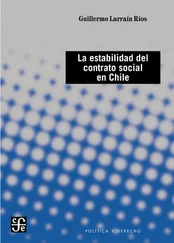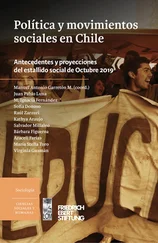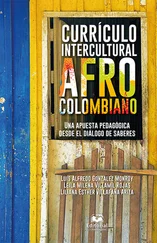Kim KW, Krafft B, Choe JC (2005a). Cooperative prey capture by young subsocial spiders. Behavioral Ecology and Sociobiology 59:92-100.
Kim KW, Krafft B, Choe JC (2005b). Cooperative prey capture by young subsocial spiders: II. Behavioral mechanism. Behavioral Ecology and Sociobiology 59:101-107.
Koenig WD, Dickinson JL (2004). Ecology and evolution of cooperative breeding in birds . Cambridge University Press, Cambridge, Reino Unido.
Koenig WD, Pitelka FA, Carmen WJ, Mumme RL, Stanback MT (1992). The evolution of delayed dispersal in cooperative breeders. Quarterly Review of Biology 67:111-150.
Koford CB (1957). The vicuña and the puna. Ecological Monographs 27:153-219.
Konrad CM, Frasier TR, Whitehead H, Gero S (2019). Kin selection and allocare in sperm whales. Behavioral Ecology 30:194-201.
Kopachena JG (1987). Variations in the temporal spacing of Franklin’s gull ( Larus pipixcan ) flocks. Canadian Journal of Zoology 65:2450-2457.
Krause J, Ruxton GD (2002). Living in groups . Oxford University Press, Oxford, Reino Unido.
Krause J, James R, Franks DW, Croft DP (2015). Animal social networks . Oxford University Press, Nueva York, Estados Unidos de América.
Lacey EA (2016). Dispersal in caviomorph rodents. Pp. 119-146, en: Sociobiology of caviomorph rodents (Ebensperger LA, Hayes LD, eds.). Wiley-Blackwell, Oxford, Reino Unido.
Lacey EA, O’Brien S, Sobrero R, Ebensperger LA (2019). Spatial relationships among free-living cururos ( Spalacopus cyanus ) demonstrate burrow sharing and communal nesting. Journal of Mammalogy 100:1918-1927.
Lambertucci SA, Mastrantuoni OA (2008). Breeding behavior of a pair of free living Andean Condors. Journal of Field Ornithology 79:147-151.
Lambertucci SA, Ruggiero A (2013). Cliffs used as communal roosts by Andean condors protect the birds from weather and predators. PloS One 8:e67304.
Lambertucci SA, Jácome NL, Trejo A (2008). Use of communal roosts by Andean Condors in northwest Patagonia, Argentina. Journal of Field Ornithology 79:138-146.
Lardy S, Allaine D, Bonenfant C, Cohas A (2015). Sex-specific determinants of fitness in a social mammal. Ecology 96:2947-59.
Lazenby-Cohen KA, Cockburn A (1988). Lek promiscuity in a semelparous mammal, Antechinus stuartii (Marsupialia: Dasyuridae)? Behavioral Ecology and Sociobiology 22:195-202.
Lecomte N, Kuntz G, Lambert N, Gendner JP, Handrich Y, Le Maho Y, Bost CA (2006). Alloparental feeding in the king penguin. Animal Behaviour 71:457-462.
Lescrauwaet AK (1997). Notes on the behaviour and ecology of the Peale’s dolphin, Lagenorhynchus australis , in the Strait of Magellan, Chile. Report of the International Whaling Commission 47:747-755.
Lescrauwaet AC, Gibbons J, Guzman L, Schiavini A (2000). Abundance estimation of Commerson’s dolphin in the eastern area of the Strait of Magellan-Chile. Revista Chilena de Historia Natural 73:473-478.
Lettevall E, Richter C, Jaquet N, Slooten E, Dawson S, Whitehead H, Christal J, Howard PM (2002). Social structure and residency in aggregations of male sperm whales. Canadian Journal of Zoology 80:1189-1196.
Linares L, Mendoza G, Linares V, Herrera H (2010). Distribución y organización social del guanaco ( Lama guanicoe cacsilensis ) en la reserva nacional de Calipuy, Perú. Scientia Agropecuaria 1:27-35.
Lizurume ME, Yorio P, Giaccardi M (1995). Biología reproductiva de la gaviota capucho café ( Larus maculipennis ) en Trelew, Patagonia. Hornero 14:27-32.
Lopez JC, Lopez D (1985). Killer whales ( Orcinus orca ) of Patagonia, and their behavior of intentional stranding while hunting nearshore. Journal of Mammalogy 66:181-183.
Lucherini M (1996). Group size, spatial segregation and activity of wild sympatric vicuñas Vicugna vicugna and guanacos Lama guanicoe . Small Ruminant Research 20:193-198.
Lukas D, Clutton-Brock T (2012a). Life histories and the evolution of cooperative breeding in mammals. Proceedings of the Royal Society of London B: Biological Sciences 279:4065-4070.
Lukas D, Clutton-Brock T (2012b). Cooperative breeding and monogamy in mammalian societies. Proceedings of the Royal Society of London B: Biological Sciences 279:2151-2156.
Maccarone AD, Brzorad JN, Stone HM (2010). Nest-activity patterns and food-provisioning rates by great egrets ( Ardea alba ). Waterbirds 33:504-510.
Macdonald DW (1983). The ecology of carnivore social behaviour. Nature 301:379-384.
Main MB, Weckerly FW, Bleich VC (1996). Sexual segregation in ungulates: new directions for research. Journal of Mammalogy 77:449-461.
Manfredi C, Soler L, Lucherini M, Casanave EB (2006). Home range and habitat use by Geoffroy’s cat ( Oncifelis geoffroyi ) in a wet grassland in Argentina. Journal of Zoology 268:381-387.
Mann G (1978). Los pequeños mamíferos de Chile: marsupiales, quirópteros, edentados y roedores. Gayana 40:13-42.
Manríquez PH, Castilla JC (2007). Roles of larval behaviour and microhabitat traits in determining spatial aggregations in the ascidian Pyura chilensis . Marine Ecology Progress Series 332:155-165.
Manser MB (1999). Response of foraging group members to sentinel calls in suricates, Suricata suricatta . Proceedings of the Royal Society of London B: Biological Sciences 266:1013-1019.
Manzur MI, Fuentes ER (1979). Polygyny and agonistic behavior in the tree-dwelling lizard Liolaemus tenuis (Iguanidae). Behavioral Ecology and Sociobiology 6:23-28.
Manzur T, Navarrete SA (2011). Scales of detection and escape of the sea urchin Tetrapygus niger in interactions with the predatory sun star Heliaster helianthus . Journal of Experimental Marine Biology and Ecology 407:302-308.
Marín M, Oehler D (2007). Una nueva colonia de anidamiento para el albatros de ceja negra ( Thalassarche melanophrys ) para Chile. Anales del Instituto de la Patagonia (Chile) 35:29-33.
Marinao C, Suárez N, Yorio P (2019). Trophic interactions between the kelp gull ( Larus dominicanus ) and Royal and Cayenne terns ( Thalasseus maximus maximus and Thalasseus sandvicensis eurygnathus , respectively) in a human-modified environment. Canadian Journal of Zoology 97:904-913.
Marino A (2010). Costs and benefits of sociality differ between female guanacos living in contrasting ecological conditions. Ethology 116:999-1010.
Marino A, Baldi R (2008). Vigilance patterns of territorial guanacos ( Lama guanicoe ): the role of reproductive interests and predation risk. Ethology 114:413-423.
Marino A, Baldi R (2014). Ecological correlates of group-size variation in a resource-defense ungulate, the sedentary guanaco. PloS One 9:e89060.
Markovitz TM (2004). Social organization of the New Zealand dusky dolphin. Tesis Doctoral, Texas A&M University, Estados Unidos de América.
Marquet PA, Contreras LC, Silva S, Torres-Mura JC, Bozinovic F (1993). Natural history of Microcavia niata in the high Andean zone of northern Chile. Journal of Mammalogy 74:136-140.
Masello JF, Pagnossin ML, Sommer C, Quillfeldt P (2006). Population size, provisioning frequency, flock size and foraging range at the largest known colony of Psittaciformes: the burrowing parrots of the north-eastern Patagonian coastal cliffs. Emu-Austral Ornithology 106:69-79.
Martínez D, González G (2004). Las aves de Chile: nueva guía de campo . Ediciones del Naturalista, Santiago, Chile.
Читать дальше












